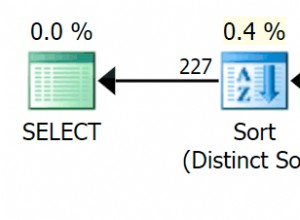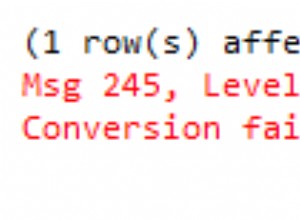Znalazłem artykuł 12/2020 który używa najnowszej wersji Django ORM jako takiej:
class Author(models.Model):
first_name = models.CharField(max_length=100)
last_name = models.CharField(max_length=100)
class Meta:
indexes = [
GinIndex(
name='review_author_ln_gin_idx',
fields=['last_name'],
opclasses=['gin_trgm_ops'],
)
]
Jeśli, tak jak oryginalny plakat, chciałeś utworzyć indeks, który działa z ikonami, będziesz musiał zaindeksować UPPER() kolumny, co wymaga specjalnej obsługi ze strony OpClass :
from django.db.models.functions import Upper
from django.contrib.postgres.indexes import GinIndex, OpClass
class Author(models.Model):
indexes = [
GinIndex(
OpClass(Upper('last_name'), name='gin_trgm_ops'),
name='review_author_ln_gin_idx',
)
]
Zainspirowany stary artykuł
na ten temat trafiłem do aktualny
co daje następujące rozwiązanie dla GistIndex :
Aktualizacja:Z Django-1.11 wszystko wydaje się prostsze, ponieważ ta odpowiedź i dokumentacja django sugestia:
from django.contrib.postgres.indexes import GinIndex
class MyModel(models.Model):
the_field = models.CharField(max_length=512, db_index=True)
class Meta:
indexes = [GinIndex(fields=['the_field'])]
Od Django-2.2 , atrybut opclasses będzie dostępny w klasie class Index(fields=(), name=None, db_tablespace=None, opclasses=())
w tym celu.
from django.contrib.postgres.indexes import GistIndex
class GistIndexTrgrmOps(GistIndex):
def create_sql(self, model, schema_editor):
# - this Statement is instantiated by the _create_index_sql()
# method of django.db.backends.base.schema.BaseDatabaseSchemaEditor.
# using sql_create_index template from
# django.db.backends.postgresql.schema.DatabaseSchemaEditor
# - the template has original value:
# "CREATE INDEX %(name)s ON %(table)s%(using)s (%(columns)s)%(extra)s"
statement = super().create_sql(model, schema_editor)
# - however, we want to use a GIST index to accelerate trigram
# matching, so we want to add the gist_trgm_ops index operator
# class
# - so we replace the template with:
# "CREATE INDEX %(name)s ON %(table)s%(using)s (%(columns)s gist_trgrm_ops)%(extra)s"
statement.template =\
"CREATE INDEX %(name)s ON %(table)s%(using)s (%(columns)s gist_trgm_ops)%(extra)s"
return statement
Które następnie możesz użyć w swojej klasie modelu w następujący sposób:
class YourModel(models.Model):
some_field = models.TextField(...)
class Meta:
indexes = [
GistIndexTrgrmOps(fields=['some_field'])
]




